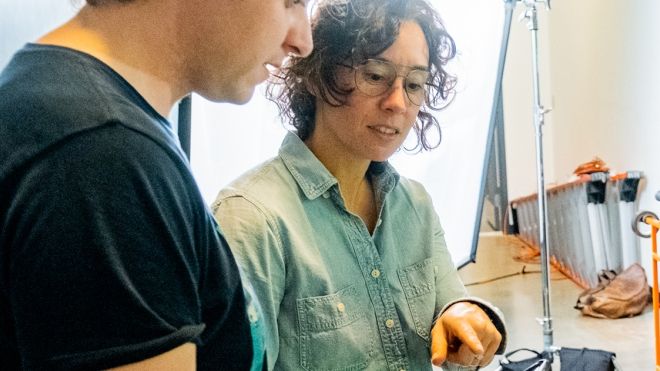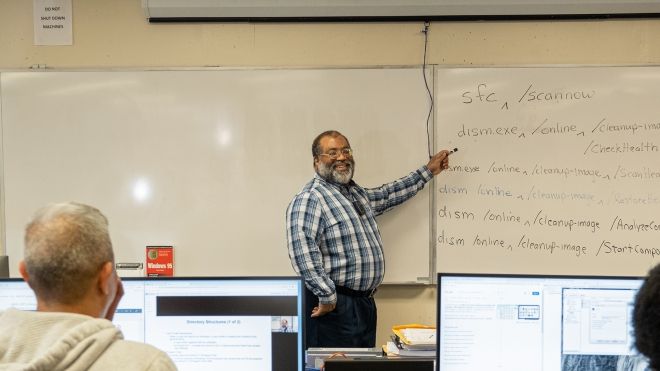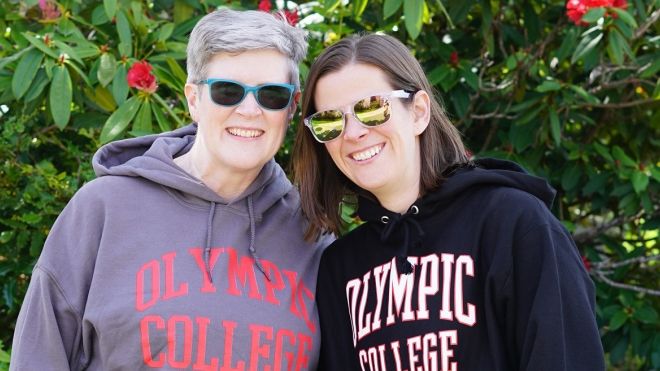With the rise of the COVID-19 pandemic, a book by one of Olympic College’s own exploring the intersection of epidemics and wars has taken on new significance.
Dean of Social Sciences & Humanities Rebecca Seaman’s 2018 book, “Epidemics and War: The Impact of Disease on Major Conflicts in History,” focuses on 19 historical epidemics and their relationship to major wars and conflicts. Seaman, the book’s editor, wrote a significant portion of the content while also recruiting authors to pen chapters on diseases or wars that matched their expertise.
The book is divided into four parts, based on the types of epidemics: Unknown illnesses (typically ancient ones), viral epidemics, bacterial epidemics, and illnesses that do not fit the other categories (such as a disease caused by a fungus, or malaria, or dysentery, which can be caused by a number of things). Seaman recruited a variety of historians for the book, including medical historians, military historians, and historians who specialized in certain time periods.
“There’s a lot of similarities in how society responded and in how governors and mayors responded,” Seaman says. “There was a lot of, ‘Well, it’s not going to happen to us.’ There were delays in taking action and people being afraid of taking too much action too quickly.”
As the risk of variants becomes a concern with COVID-19, Seaman points out that mutations were also a risk with the Spanish Flu. “A virus has to have a host,” she says. “If it’s deadly, it kills its host too soon and so it cannot thrive. So the very nature of a virus is to actually mutate so it won’t kill the host. The problem is that sometimes it mutates the wrong way.”
That happened with the Spanish Flu, which went from being fairly mild in 1916 and 1917, to being very deadly in the illness’s second wave. People panicked during the third wave, but the virus mutated again and become less deadly, Seaman says.
So what’s the connection between epidemics and wars? Before the development of vaccines, most war causalities had been caused by disease rather than by combat. Wars cause society to quickly mobilize, and disease prevention is often not the first priority.
Seaman noted that before vaccines, when people from the countryside reported for duty, they were deemed to be healthier than their counterparts from the cities, based on their medical exams. But they ended up disproportionately dying from disease because they hadn’t built up immunity as those from the cities had.
Seaman noted that pandemics tend to disproportionately affect those who are least prepared for them, whether due to financial circumstances, personal health or other factors.
“When COVID-19 hit, I knew what to watch for in terms of who it was going impact the most, and was able to read between the lines, but as a historian I tend to not predict," she says. "That’s a common myth about what history is good for. It helps you recognize patterns and watch for things, but you can’t predict. That would be like me saying, ‘We’re going to have a second wave that’s really deadly.’ You don’t know, because it’s up to the virus and how it’s going to mutate.”
Although Seaman says she doesn’t track the book’s sales too closely, she noted that she’s seen an uptick in the amount of scholarly research citing her book since COVID hit. She’s able to track citations on a platform called ResearchGate, and has noted an increase in citations since the pandemic started.
The book is available to check out via curbside pickup from OC Libraries. You can also read more about the book on the publisher's website.


